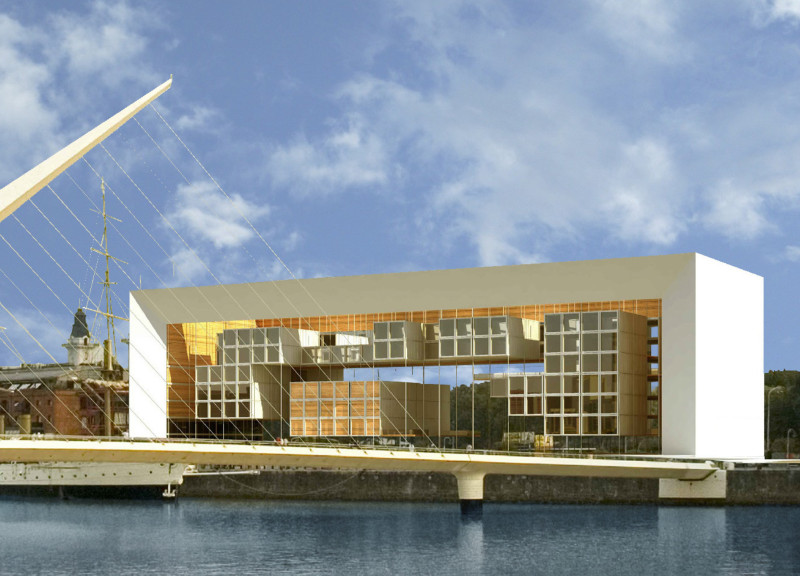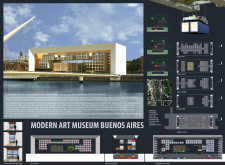5 key facts about this project
## Overview
The Modern Art Museum is planned for a prime location in Buenos Aires, Argentina, adjacent to the Puente de la Mujer swing bridge. The design integrates contemporary art presentation with the urban context of the Río de la Plata riverbank, featuring innovative architectural strategies and principles of adaptive reuse. The intent is to create a space that reflects the dynamic nature of art while fostering engagement with both the local community and visitors.
## Spatial Strategy and User Interaction
The museum's spatial organization consists of multiple levels, with the ground floor designed to facilitate access. Key areas include the main entrance, galleries, an auditorium, and a café, establishing a strong connection to the urban landscape. The upper levels contain flexible exhibition spaces, enhanced by balconies and terraces that promote interaction with the outdoor environment. This thoughtful arrangement allows for variations in exhibition layouts, accommodating diverse artistic expressions and enhancing visitor experience through both spatial flow and accessibility.
## Materiality and Sustainability
Material selection plays a critical role in the museum’s function and aesthetic. Shipping containers serve as the primary exhibition spaces, allowing for modularity and adaptability. The interior features reclaimed wood finishes, supporting sustainable practices and creating an inviting atmosphere. The exterior is clad in painted metal panels that echo the architectural lines of the nearby Puente de la Mujer, fostering a sense of context and continuity with the surrounding environment. This approach not only emphasizes ecological responsibility but also enhances the museum's visual relationship with its setting.



















































